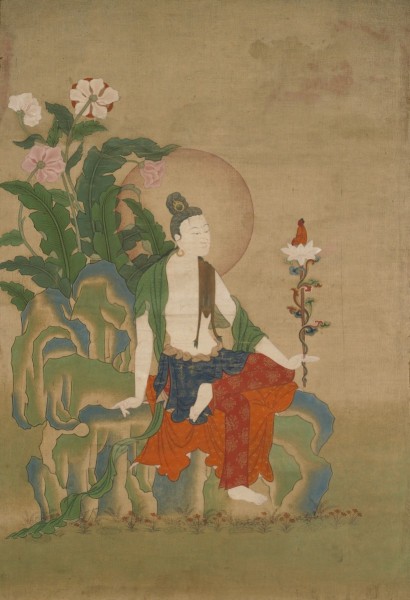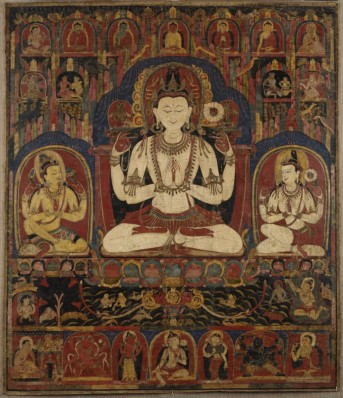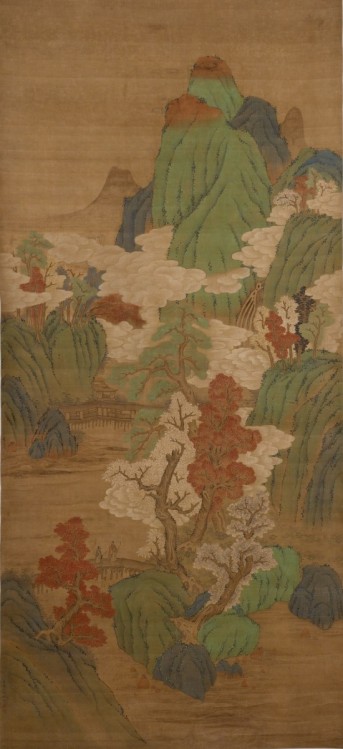Eastern Tibet, 18th century; pigment on cloth with silk mount; 39 3/8 x 20 3/4 x 1/2 in.; The Rubin Museum of Art, New York, C2008.9.
Belonging to a set of paintings depicting the Eight Great Bodhisattvas, this work is rendered in a Chinese-inspired style called gyalug in Tibetan. The blue and green shaded outcropping derives from Chinese landscape painting and reveals the otherworldly nature of the realm. The Tibetan artist shows Amitabha, the spiritual father of Avalokiteshvara, sitting on the lotus that the bodhisattva holds, instead of the more customary presentation as an icon within Avalokiteshvara’s crown. The ruby red color identifies this Buddha as Amitabha. Avalokiteshvara’s halo is also tinted red, as the two figures look at each other in serene meditation and spiritual connection. LL






